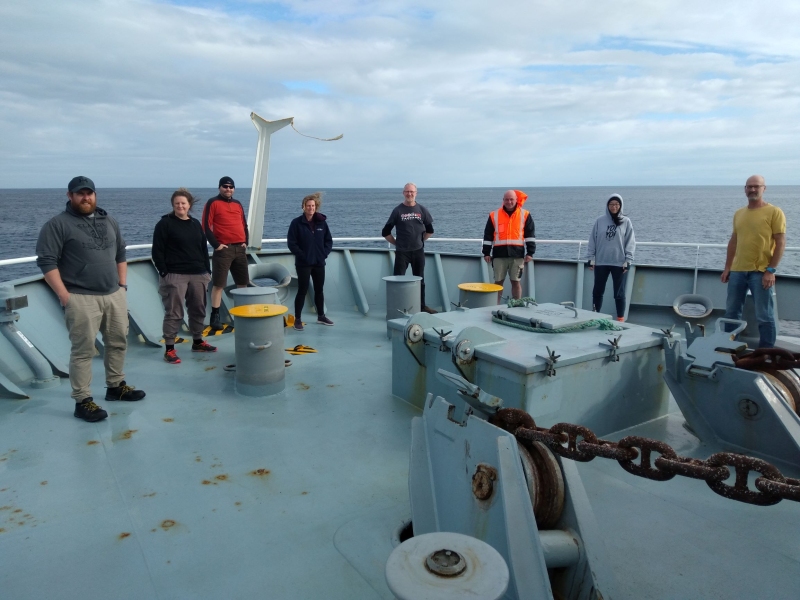Owen Anderson, voyage leader
Where are you from?
Wellington.
What is your role onboard?
To oversee the science operations during the voyage, plan the day to day activities in consultation with the Captain, officers, and science watch leader.
How long have you been at NIWA?
Thirty years.
What did you want to be when you “grew up”?
I was always interested in the sea and spent a lot of time on it, in it, and under it when I was growing up and although I did try to get into med school, I was always going to end up in some marine-based job.
What is so special about working onboard a NIWA vessel?
I enjoy the fact that we are all working as a team towards the objectives of the voyage, and it is great to be surrounded by so many dedicated and talented professionals that make this happen.
What is your favourite thing about going to sea?
The discovery aspect of it. We are always going to new places and finding new things, whether it be an undiscovered undersea feature, images of rich seafloor communities and habitats, or catches of weird and wonderful species – an image or sample of an unusual or rare sea urchin will usually make my day as these animals are a particular passion of mine.
Who are the team of scientists onboard?
- We have four specialist biologists with a wealth of experience and knowledge of deep-sea fauna: Niki Davey, Caroline Chin, Diana Macpherson and Mark Fenwick. Their job is to identify and record details of the animals, habitats, and substrates observed by the DTIS camera system.
- We have specialist multibeam echosounder operator and GIS analyst Arne Pallentin, who also leads one of the two 12-hour science team watches.
- We also have two specialist electronics technicians, Steve George and Nick Eton, who keep our electronics equipment functioning, especially the Deep Towed Imaging System (DTIS) which is the key tool being used on this voyage.
- And we have myself, who as well as overseeing the daily activities, will also help the biologists in their tasks.
What are the general objectives of this voyage?
This voyage is funded by Fisheries New Zealand and the overall objective of the research project is “to expand and develop initiatives to improve confidence in predictive models of seabed fauna and habitat distributions”.
Our objective is to collect high-quality information about the distribution and abundance of seabed habitats, communities, and species across the Campbell Plateau. This data will be used to test existing predictive models of species and habitat distributions, and to make new and improved models with the addition of species presence and absence data from previously unsampled locations. These models can then be used to inform an assessment of the risk to seafloor habitats and ecosystems from commercial bottom trawling.
Many species and communities are known to be sensitive, fragile, and slow to recover after damage, and information on their distribution and abundance can help fisheries managers to make decisions that will mitigate the impacts from fishing.


